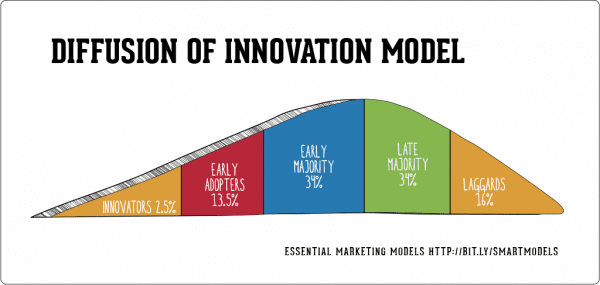Beyond Launch
Platform Engineering's Real Test
The most dangerous moment for your platform engineering initiative isn't launch day—it's the day it becomes successful. When your platform shifts from 'innovative project' to 'daily operations,' everything changes.
A Platform Engineering Director recently shared: "We spent 18 months building our CI/CD platform, each month celebrating dramatic improvements in deployment frequency, but we eventually found ourselves defending our headcount in budget meetings".
I’ve seen this same scenario play out across large companies across Europe as the first wave of platform engineering initiatives transitions from revolutionary to routine.
The real challenge isn't building a platform, it's sustaining and evolving it once the initial excitement fades.
Shifting Sands
The skills that build successful platforms aren't the same as those that sustain them. Early platform teams thrive with revolutionaries who challenge conventions. As platforms mature, they also need team members focused on reliability, documentation, and user experience.
New platforms are primarily judged on the capabilities they provide, and their audience of innovators and early adopters are eager to experiment, overcome challenges, and willing to overlook shortcomings. The platform team can focus their efforts on the joy of building new features and pushing them out to users with limited risk. There is limited operational overhead because the platform is simple, and the user base broadly content. This honeymoon period ends all too soon.
As the user base grows, so too do their expectations and the need for user support. This new breed of early and late majority users are less forgiving of poor user experience and frown at failure. The team must shift their efforts from building new features to making them easier to use and operate more reliably.
Leaders must continually assess the shape of their team and how they allocate work. There’s no faster way to lose senior engineers than to feed them exclusively on a diet of bug fixes and incremental improvement. Equally, it’s vital to ensure that the platform and its codebase remains accessible to allow new engineers joining the team.
Where Good Tools Go To Die
Once a platform has a healthy community of users that grow dependent on the platform for their day-to-day work, more consideration is needed of how change is rolled out safely. It’s difficult to promote an ethos of “move fast and break things” after causing your third major production issue.
Unreliability is a death sentence for platforms. Users will quickly lose trust and find another solution if your platform causes more frustration than it intends to solve. But your platform was most likely founded on the principles of moving faster, so it can be equally challenging to manage expectations as you implement more controls on how change is made to your platform.
In enterprise environments, silence gets interpreted as stagnation. Stakeholders will assume "if I'm not hearing about progress, there probably isn't any” - and they’re usually right! This isn't cynicism; it's pattern recognition honed from watching “strategic initiatives” quietly slide to "legacy system someone keeps running" as teams (and budgets) get pulled toward The Next Big Thing. To avoid the same fate, it’s critical that platform teams provide regular updates to demonstrate that things are moving forward and signpost future developments.
The New Normal
When platforms first launch, value demonstration is straightforward: you're replacing manual, error-prone processes with automated, reliable ones. Early wins are dramatic and visible. Deployment frequency jumps from monthly to daily and lead times shrink from weeks to hours.
Platform teams can be kept busy for a number of years solving these types of problems, particularly in highly regulated environments like Banking where manual processes have accumulated like sedimentary rock layers. Users celebrate each new platform feature, executives quote your metrics in board meetings, and budget conversations are refreshingly brief.
Eventually, a “new normal” begins to form and perceptions change. As your improvements become standard practice, the baseline expectations reset. What once seemed miraculous, now feels unremarkable. The slow, painful "before times" fade from organisational memory.
Successful platforms face a fundamental paradox: the better they work, the less remarkable they appear. Excellence in platform engineering means hiding complexity, eliminating friction, and making the difficult look effortless. Your platform becomes digital plumbing; absolutely essential, but invisible until something breaks.
This invisibility becomes dangerous during budget season. Finance teams see headcount costs for "maintaining existing systems" rather differently than "driving business transformation".
Platforms must continue to demonstrate real-world business value. The most successful platform leaders hunt down specific business outcomes their platform enabled. They don't just track deployment frequency, they find the product team that shipped a critical retention feature two weeks ahead of competitors, preventing £3M in churn. They connect how compressed validation cycles helped avoid regulatory fines. Technical excellence becomes irrelevant if it can't be translated into revenue protection, cost avoidance, or competitive advantage.
Launch to Legacy
The true test of platform engineering isn't the initial launch but the sustained evolution that follows.
The question isn't whether your platform works today, it's whether it can evolve to meet tomorrow's challenges. The organisations extracting real value from platform investments are those planning for Act Two from Day One. They build teams that can both innovate and operate. They establish metrics that connect technical capabilities to business outcomes. They communicate progress even when the work feels routine.
Is your platform built to evolve or just to launch?
If you enjoyed this article, you might also want to check out the submissions from other CNCF Content Club members, including:
Graziano’s great post that echoes many of my thoughts above.
Abby’s great blog post about what we can learn from over-the-air car updates and the dangers of “pets wearing cattle costumes”! 🐮
This video from Kalle that offers a mix of insights and great scenery.




